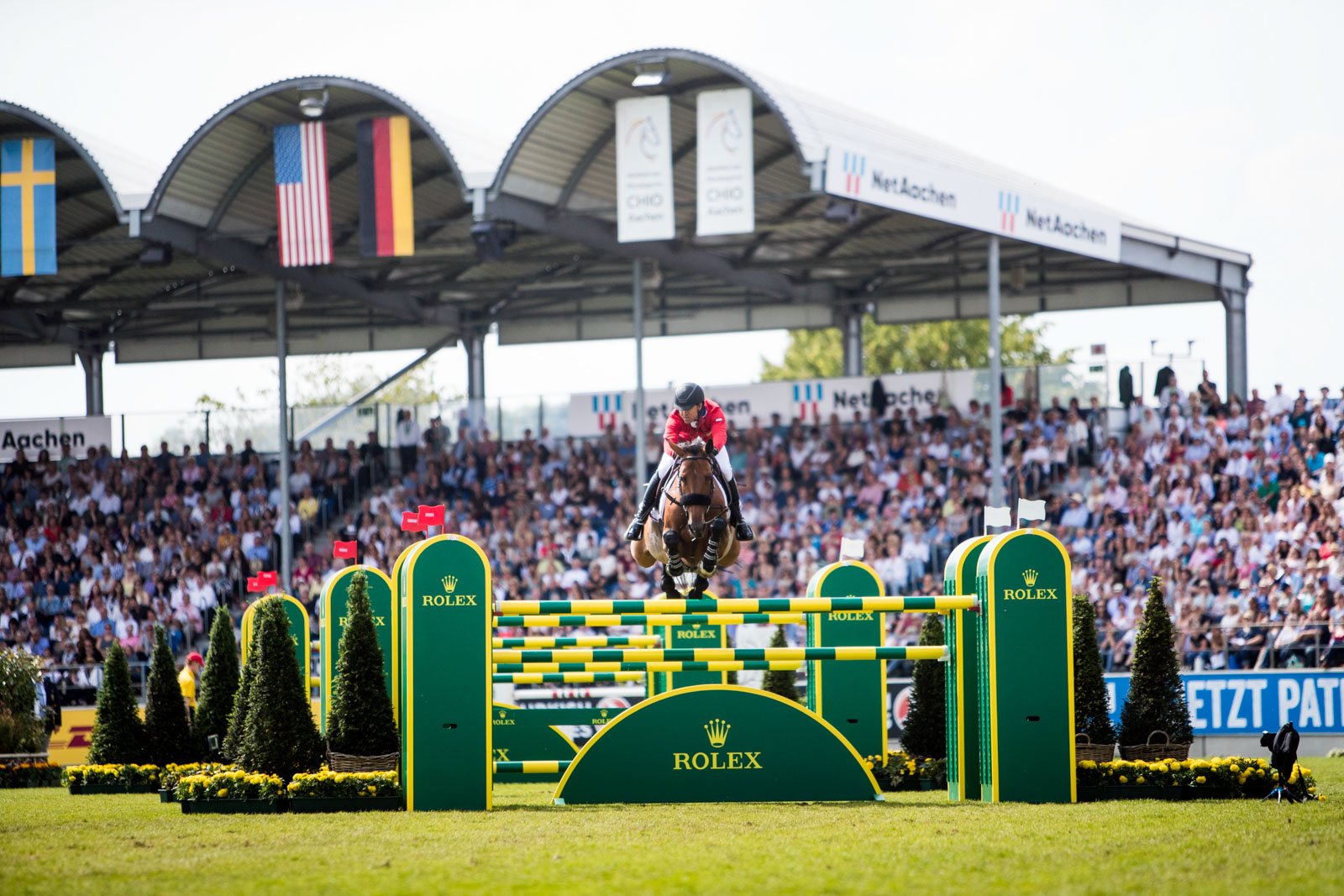Rolex hosted a virtual roundtable with show jumper Kent Farrington and a select group of representatives from an international mix of publications. Equestrian Living, the only U.S. magazine participating, engaged in a candid question and answer session with Kent as he prepares to compete at CHIO Aachen (June 23-July 2) and celebrate the 10th-year anniversary of the Rolex Grand Slam of Show Jumping, which originally launched in 2013.
Kent won the Rolex Grand Prix with Gazelle at CHIO Aachen in 2019. He hopes his extensive preparation and training with his horse Landon along with his revered “lucky watch” will launch him to the top of the podium again.
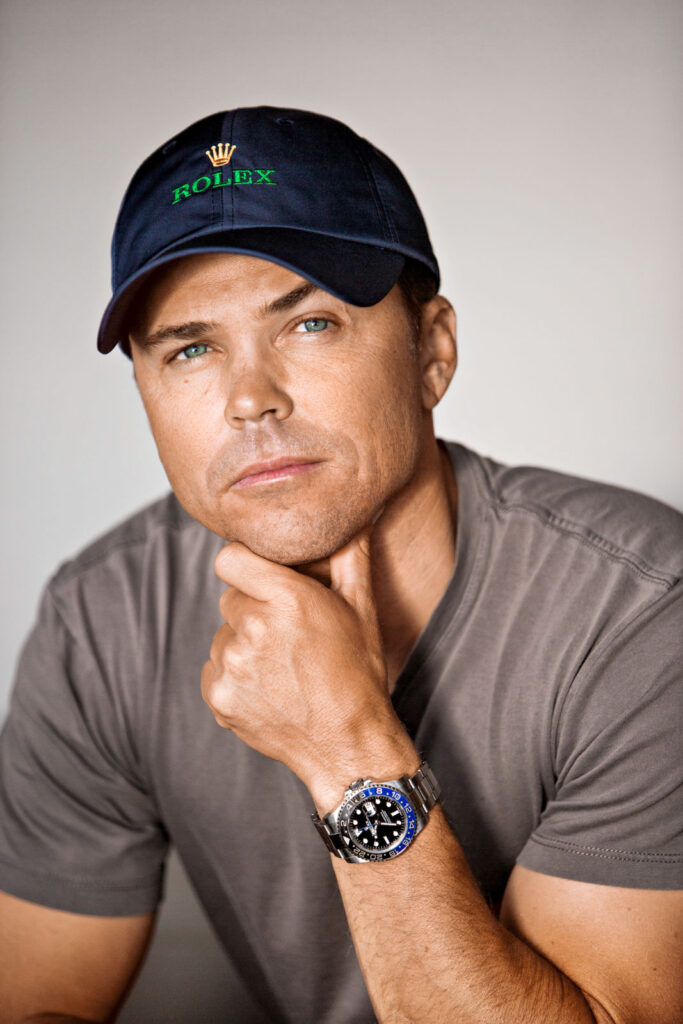
Q: Where are you at the moment?
Kent Farrington (KF): I am currently on the West Coast of Canada. I always do a couple of events at Spruce Meadows as a warmup ahead of CHIO Aachen, as well as in the lead up to CSIO Spruce Meadows ‘Masters’ Tournament.
Q: The 10-year anniversary celebrations of the Rolex Grand Slam of Show Jumping will launch at CHIO Aachen next month. How has the initiative changed the sport over the past 10 years?
KF: I believe that the Rolex Grand Slam of Show Jumping has elevated the prestige of the sport. It has given riders something to focus on, as we all plan our season around these Majors, which is very similar to golf and tennis. The Majors that make up the Rolex Grand Slam Show Jumping are not only some of the biggest events in the world with the biggest prize money, but they have an important history and prestige; they are truly the pinnacle of the sport.
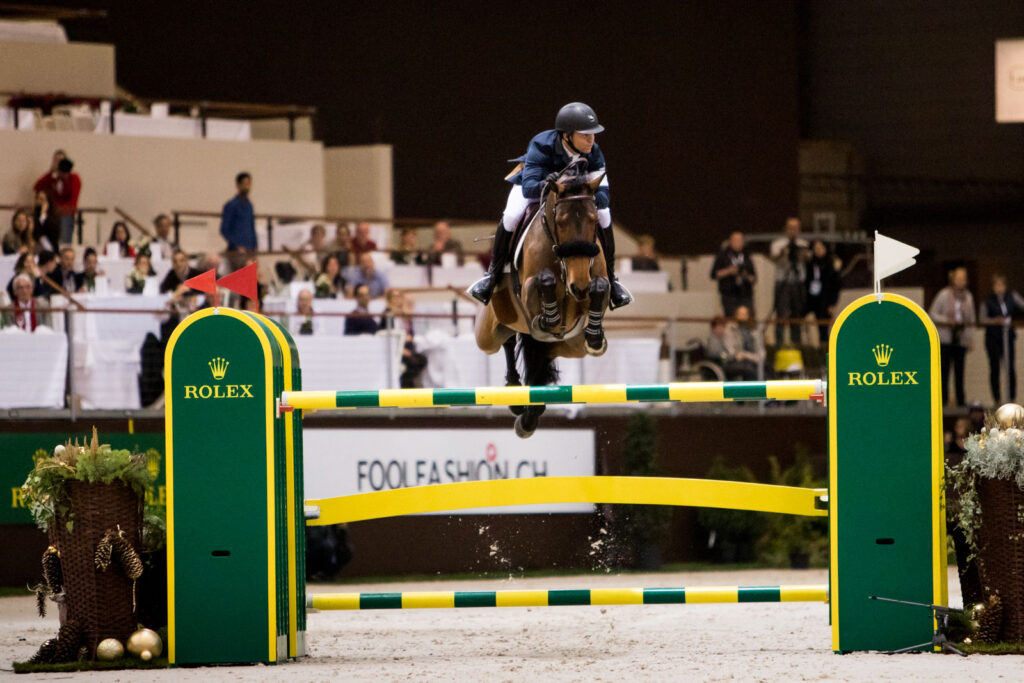
Q: You won the Rolex Grand Prix with Gazelle at CHIO Aachen in 2019, what did this win mean to you?
KF: My Rolex Grand Prix win with Gazelle at CHIO Aachen in 2019 was incredibly special. It was a little bit of revenge for me as I had come in second at Aachen before and had multiple top finishes there. This win came off a serious injury that I had. I broke my leg badly and was out of the sport for a while. It was, in a sense, my resurgence back into the highest level of the sport, and proof that I had fully recovered. I will always consider it as an important and major part of my career and comeback.
Q: How important is patience and time in the sport of equestrianism?
KF: Patience with horses is one of the most important things in our sport. It is required when developing the horse and when competing at a high level. It allows us to evaluate when it is the right time to compete a horse, rest a horse, or move a horse up to the next level.
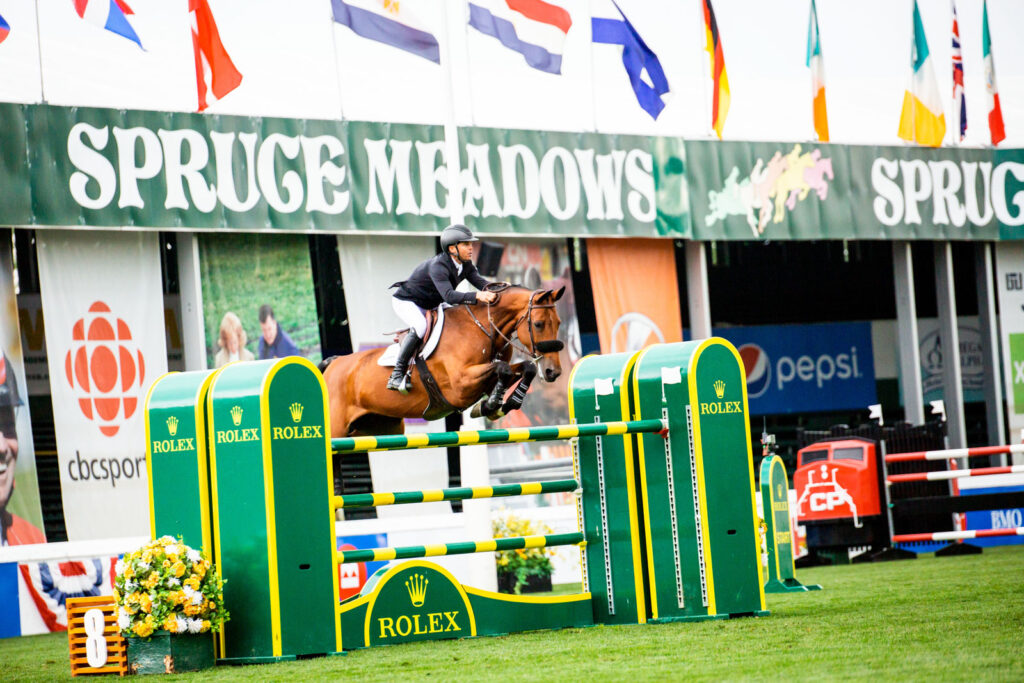
Q: Which horses are you planning on competing at CHIO Aachen this year?
KF: I am planning on bringing Landon. He is a 10-year-old that I bought at the end of his 7th year. My favorite way of forming a bond with a horse is to start training with them when they are on the younger side and create a strong partnership, which allows us build up together.
Landon has done multiple seasons competing at Spruce Meadows and other grass venues. He has just started doing 5* Grands Prix this year. I am looking to build him up on grass, so I will go to a smaller show in Spruce Meadows, so he is confident before CHIO Aachen.
Q: With so many achievements already under your belt, how do you handle your success while continuing to develop as a rider?
KF: Horses and the nature of our sport keep you very humble, you can go from being at the top to being at the bottom very quickly; there are a lot of variables working with horses.
Learning to adapt to different horses is what always keeps it new and exciting. Finding a different way to work with a horse and understanding their different personalities; determining what allows them to be the best version of themselves is the most rewarding and keeps me coming back for more.
Q: To date, Scott Brash is the only rider to have won the Rolex Grand Slam of Show Jumping. Do you believe that it can be done again?
KF: If one man can do it, surely another one can! It is a very tall order to be able to pull that off and you need a lot of things to go your way, of course, but it is certainly possible.
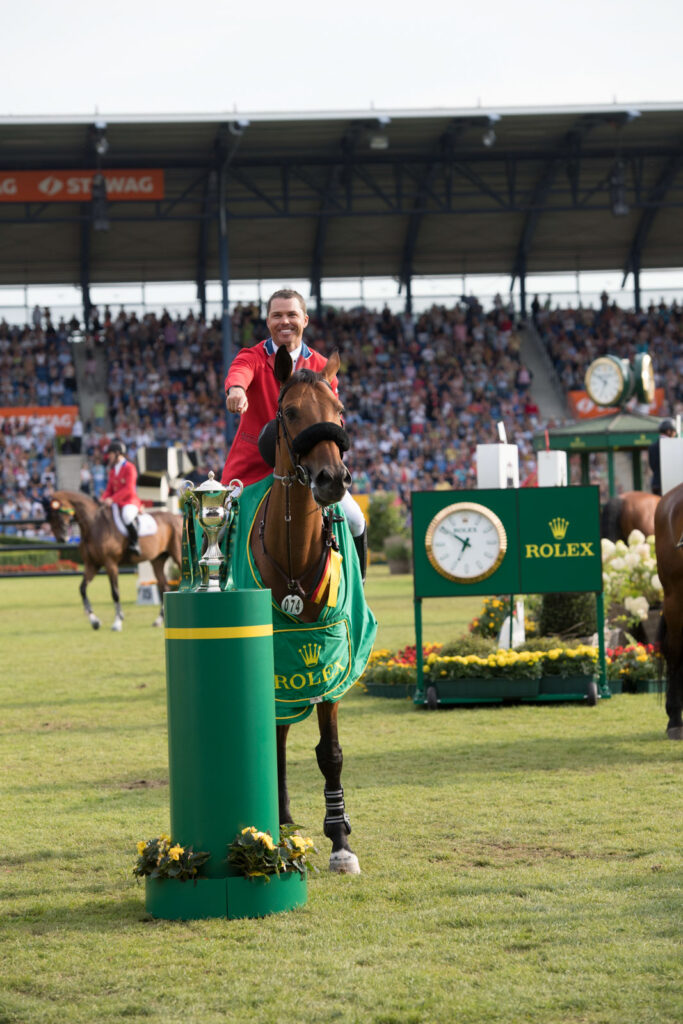
Q: Do you have any advice on how to keep horses fit and motivated for show jumping at this high level?
KF: Yes. I believe that horses are just like people. To keep them fit and motivated is a combination of a routine for fitness, staying active and healthy, but also keeping them mentally engaged and refreshed. This means not competing too much, balancing the horses rest time with competition time, and changing their setting so that it is not constantly the same. My horses spend a lot of time in the paddock, riding on trails, and doing trackwork, which is an essential part of my training regime.
Q: Can you recall the moment that you fell in love with show jumping?
KF: My love for the sport didn’t really come until I was around 15 or 16-years-old as before then I just enjoying being around horses. I started out doing some pony riding and some racing, and at that point, I truly thought I would become a flat or jump jockey. This passion evolved into show jumping and I slowly moved into that direction. It was always more about the love of the horse, and animals.
Q: As an athlete, you can strive to peak for particular events and timing is vitally important. How difficult is it to peak your horse at the right time? And if you feel that they’re not peaking, do you have a backup plan?
KF: I think that is a very good question. Peaking at the right time for both horse and athlete is fundamental to competing at a high level. It is truly important to be able to rise to your highest performance level at important times. No individual, horse, or athlete, can be at their peak level 365 days a year, that is just impossible.
Understanding which events are the most important in your calendar is the first step, and then prioritizing everything else in your life. If 10 things are considered a priority, you will end up being mediocre at all 10. That is why the Rolex Grand Slam Majors are so important for our sport, because it has given riders key shows in the calendar to truly aim for. When you have all the riders collectively aiming for the same big events, you end up with the best competition.
This year for instance, I am riding a horse that has limited experience at a higher level so part of getting him to peak or be ready for that competition is going to require me doing multiple shows in a similar type of setting. This is to ensure that he is acclimated, comfortable, and in a rhythm of competing by the time he gets to CHIO Aachen.
Q: In Equestrian Living’s annual Gold List survey, Aachen has been deemed the premier venue in which to compete for nine consecutive years. Can you describe what is so extraordinary about competing at CHIO Aachen?
KF: There are a few contributing factors that make CHIO Aachen the best, including the history and prestige of the sport; the highest-level competitors all on their best horses, and the incredible and educated crowd. They understand what they are watching so they appreciate it when a rider makes a very tight turn to a fence. They know how hard that is and they know the type of risks that riders take to win the competition. This crowd is very engaged and involved in what is happening, which makes it even more exciting.
Q: You became a Rolex Testimonee in 2014, and now you are looking forward into the next decade with the best yet to come – what are your future goals and aspirations?
KF: I have many! But my immediate goals are always the same, I always aim for the Rolex Majors. It is incredibly hard to pull off those wins, even when you look at the best riders in the world, to win multiple Majors is difficult, and an incredible achievement. I would say that it remains a constant goal of mine to have horses that are good enough to win a Rolex Grand Slam Major, and then trying to peak their performance so that they can win one. With the Paris 2024 Olympic Games on the horizon, that is becoming a focus for me, and I am trying to have multiple horses that are ready to compete there, so I have backup plans.
As we touched upon earlier, it is vital for riders to have backup plans, as if a horse is not ready, then the easiest solution is to ride another horse that is ready to compete, but if you do not have an alternative horse for the competition, the obviously disappointing alternative is to sit it out. So, I am working very hard now to ensure that I have multiple horses that are ready to compete at the best level.
Q: What inspires you to keep you motivated in the sport?
KF: I truly love the horses and I am living my dream. Many people ask me whether I need a vacation or ask when I last went on vacation. I always answer that I feel like I am on my vacation!
I get to travel the world with a group of people that are my friends, and all the horses who are also my friends. Travelling around the world to the various competitions that I watched on TV when I was younger, and still being part of that sport today, is what keeps me motivated. I truly love it.
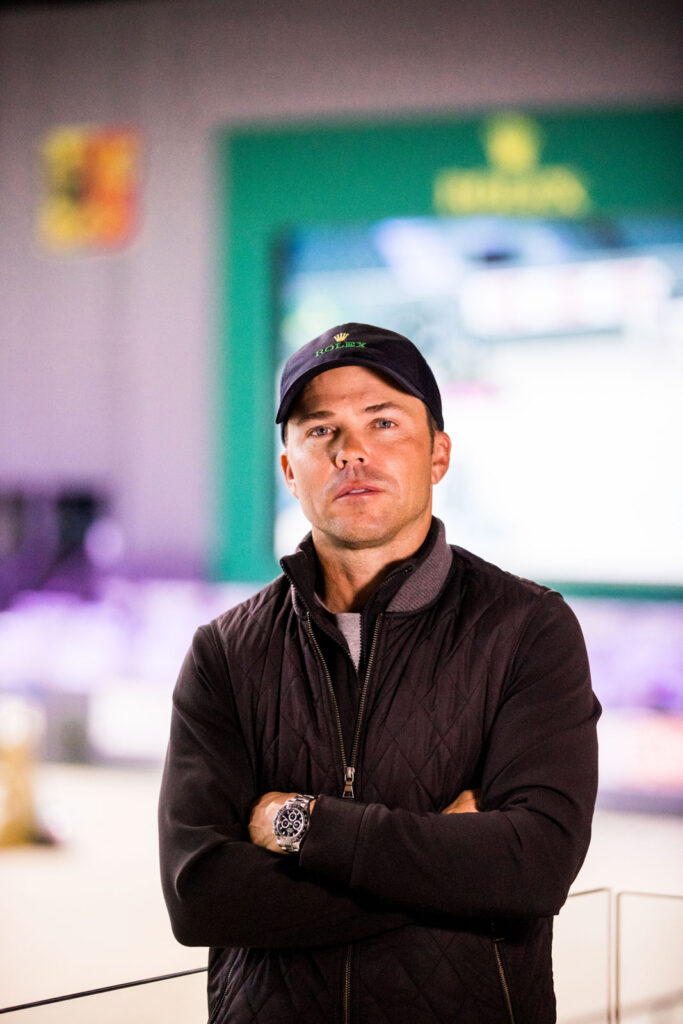
Q: How important is your own fitness? And do you have daily fitness routines?
KF: There has been an evolution in our sport as with many other sports. People are now taking a more serious approach to fitness. I have always taken my fitness and health seriously since I was a child. I would do gymnastics and martial arts; I have always viewed it as an advantage, if I am more fit and athletic, I will be more helpful to my ultimate teammate, which is my horse. If we are both the best version of ourselves, we will achieve better results.
Q: Rolex has an initiative where they invite two young riders to participate in the Majors. How important is it to you to inspire up-and-coming riders and encourage the ongoing health of the sport? Do you have younger riders that you work with?
KF: This is a multifaceted question. Firstly, I think Rolex’s involvement in the Young Riders Academy is great, as supporting up-and-coming riders, getting them truly engaged and exposing them to that level of sport is what inspires the next generation. Furthermore, giving them the opportunity to compete at these Majors against the best competitors in the world at such a young age is fantastic. Rolex’s constant search, and recognition of, excellence is one of the main reasons that I am so incredibly proud to be a Rolex Testimonee. Taking on that role to inspire the next generation is what defines greatness to me.
Q: Could you tell us about the process of producing the horses?
KF: I think ultimately, in our sport, what you need is a true partnership with their horse. The horse must know the rider very well, and the rider has to know the horse very well. This is what leads to success, just like any other team sport – knowing each other’s moves, knowing when the horse needs confidence, knowing how to do a proper warm-up for your horse etc. All these things take time, so the earlier you can start that partnership with a particular horse, the more of an advantage you are going to have. My approach has always been to start with younger horses and build them up gradually, this allows me to get the most out of their development and the experience.
Q: Could you please elaborate on the string of horses that you currently have?
KF: I view them as the next generation. I had Voyeur and Gazelle who have recently retired, Creedence who is now sixteen, so he is in in the twilight of his career now. My next group of horses are around 10 years old or less in age. Landon who I have mentioned is 10, and I am aiming for CHIO Aachen on him, but I also have two very good nine-year-olds, one called Toulayna and the other Greya. I bought Greya when she was four and she never done any competitions before, and I bought Toulayna as a seven-year-old, similarly to Landon, and I have been building her up over the last two years.
Q: Could you elaborate on the transition from this top group of horses to the next generation of horses?
KF: Building up the next group of horses is certainly a daunting task, and what happens if you do not end up with a horse that makes it to the top level, will you feel discouraged? I approach everything with confidence and a positive mindset, and I believe in the horses that I choose as well as in my skills and approach that we will succeed. It is also important to recognize that if some horses don’t make it to the highest level, that it’s okay. I believe that brutal honesty combined with a confident approach is what will give you the best outcome.
Q: Can you share what is your favorite Rolex watch and the significance that it holds? Is it from winning the Rolex Grand Slam of Show Jumping at CHIO Aachen in 2019?
KF: I do not have one favorite; it is hard to choose. I have a couple that I always wear. I am currently wearing the Rolex Daytona, and it is the one that brings me luck. Landon won his first 5* when I wore this watch, so I am going to stick with this one. I will be wearing this same watch at CHIO Aachen, and I hope it will bring us the same luck.
Q: What are you most proud of in your career?
KF: I am most proud that I am doing the sport the way in which I set out to do it, and that I have been able to make a career out of something I love. Riding was originally a passion of mine and to be able to mix my love of horses and make it a viable career that I can do with my friends, who are a part of my team, and provide them with opportunities and lifestyle that they like, travelling the world and working with horses, is above any individual achievement.
Q: Have you ever had a situation where you had a horse that was capable enough to compete at the top level, but who did not travel well?
KF: If you get the horses when they are young, you can form a strong partnership with them which allows you to learn more about each horse as an individual and will therefore help you navigate the issues that would arise from travelling.
If I have horse that is a difficult shipper or that gets dehydrated easily then I can combat that by making sure that the horse has plenty of rest upon arrival. I can plan around these issues by setting up easier travel logistics. This can vary from looking at which flights are the most direct, keeping layover time at a minimum, arranging where will my horses stay in between competitions and finally thinking about giving them enough rest and recovery between competitions. Of course, there is a large team behind me which makes all of this possible.
Q: Have there been trainers or riders that you have worked with over the years that have had a significant influence on you?
KF: That list is very long. It would be a million people! I did not grow up in a family that was involved in horses or in an environment that was exposed to horses, as I lived in the city of Chicago. There was no YouTube or online platforms back then, so most of my exposure to the sport was from VHS video tapes from different events, and I would watch them on repeat until the tape would burn out because I had watched it too many times.
I would watch Rodrigo Pessoa with the remarkable Baloubet du Rouet and Nick Skelton, who was always one of my heroes in the sport. They were able to transcend multiple generations of the sport, winning the entire time, I found this truly inspiring.
Q: Which of your horses could make it number three in the Rolex Majors?
KF: I think Landon. He is the next one on the list. We are now gearing him up for CHIO Aachen. I will be wearing my lucky watch and hopefully we can pull it off!
A few Rolex equestrian facts:
• Rolex has been a committed partner of equestrianism for more than 60 years, dating back to 1957 when pioneering British show jumper Pat Smythe became the sport’s first Testimonee
• Rolex’s affiliation with CHIO Aachen spans over 20 years, dating back to 1999
• Launched in 2013, and supported by Rolex from the outset, the Rolex Grand Slam of Show Jumping rewards the outstanding rider who wins three consecutive Majors at four of the world’s most historic shows – CHIO Aachen, CSIO Spruce Meadows ‘Masters’ Tournament, CHI Geneva and The Dutch Masters.

